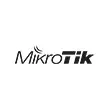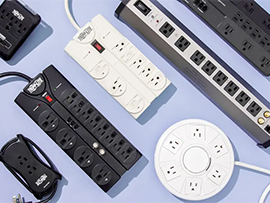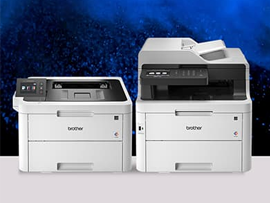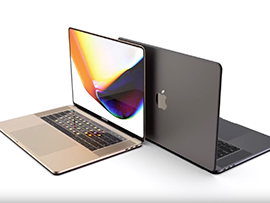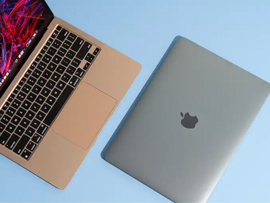Blog
-
Posted: August 09, 2023Categories: NetworkingRead more
The world of wireless connectivity is undergoing rapid transformations that are enhancing the speed and long-range communication at a level that was almost inconceivable a few years back. One such revolutionary innovation is airFiber. Built by Ubiquiti Inc., airFiber sparked a revolution that helped WISPs (Wireless Internet Service Providers) overcome technical and financial restraints and provide scalable and profitable networks across the world. The various models of airFiber are finding applications in various brand-width-intensive areas and organizations such as large enterprises, and government organizations.
But there are many options available on the market, the most prominent of them are airFiber 5XHD and airFiber 5X. Naturally, people ask about the salient features of both these options and ask as well which one is better and why. We have decided to
-
Posted: December 30, 2022Categories: HardwareRead more
A comprehensive guide that addresses all commonly-raised questions regarding power surge protectors like what is surge protectors and which features make a surge protector the most suitable device for you,
Today’s modern devices and appliances have become very sensitive than they used to be in past. They rely on steady and constant power to ensure a reliable working and safe environment. So much so that any device that is plugged into a power outlet is prone to severe damage resulting from power surges, spikes, or power outages. But before we discuss the role of Surge Protectors, it is important to understand what is surge protectors, to begin with.
Table of Content
-
Posted: December 30, 2022Categories: Ip phoneRead more
Nowadays, businesses all over the world are shifting towards the widespread usage of IP phones. Gradually and sometimes, rapidly, traditional landline phones are being replaced with IP phones for performing various business-related communication, both within the company and outside the company. HD audio, background noise reduction, convenient scalability, portability, security, economical long-distance reach, and real-time call analytics are some important advantages that IP phone offers that make companies highly desirous of their installation. In addition, cutting-edge features like HD sound quality, hearing-aid compatible headsets, WiFi and Bluetooth support, touchscreen & color display, voicemail, Caller ID, Contact List, Device Management System, and the like features have further added to their wild popularity.
Table of Content
-
Posted: December 29, 2022Categories: UPSRead more
UPS or Uninterruptible Power Supply systems have become an integral part of any organization or office. They perform very crucial tasks like absorbing relatively small power outages, smoothing out noisy power sources, providing power continuously or uninterruptedly during line sage, shutting down power equipment to avoid losses, providing short-circuit protection, displaying voltage/ current draw of equipment, and giving alarms in case certain error conditions. Given these vital tasks, picking up the correct UPS system for IT and industrial applications is highly significant as it is crucially required for business continuity, efficient disaster recovery, and the safety of employees of any organization.The blog underhand is going to discuss some important features that should be part of any UPS system you are going to install and deploy.
Table
-
Posted: December 29, 2022Categories: Wireless Access PointsRead more
Access Points or Wireless Access Points play a very important role in networking. They are used to create a Wireless Local Area Network or WLAN. Access Points are connected to a wired router, switch, or hub via an Ethernet cable. They project WiFi signals to the designated area. APs are capable of supporting more than 60 devices simultaneously. They are finding ever-expanding applications in businesses because firms enjoy some distinct advantages by dint of some cutting-edge features. For example, the Captive Portal and Access Control List support help IT administrators limit the guest access and number of users without compromising the security of the network. Clustering features allow network administrators to view, deploy, configure, and secure networks as a single entity. These and other advantages have made APs a popular choice for establishing a WiFi network within an office or building.
-
Posted: December 09, 2022Read more
Networking switches are the building block of any network. They can be access layer switches, distribution layer switches, and core layer switches depending upon the location where they have been installed or deployed. Since networking switches are intelligent, they have almost replaced the use of networking hubs which warrants that switches should be finalized after well-thought-out deliberation. This blog serves this purpose so that you can navigate the tech world with confidence and make informed decisions.
-
Posted: December 09, 2022Categories: PrintersRead more
If you think that printers have become obsolete and they are no longer required in this age of digitalization, you should rethink your approach. Printers should be part of your office or workspace because they play an important role following ways:
-
Posted: December 09, 2022Categories: HardwareRead more
As the world of business is undergoing rapid digitalization and remote working is becoming a routine matter, the need for having a cutting-edge and comprehensive video conferencing/collaboration solution has become ever more imperative. It does not matter whether you are using a simpler video conferencing solution like Skype or a sophisticated one requiring hardware-based devices, this is undoubtedly more cheap and more inexpensive meeting method than costly and time-consuming business trips. But this video conferencing system should align with the size, budget, and the usual number of meetings per month of the organization.
Table of Content
-
Posted: December 09, 2022Categories: MacBookRead more
The immersive user experience, strong security features, superfast performance, ergonomic trackpad, highly stable and user-friendly macOS operating system, matchless quality and durability, longevity and aftersales value, ease of purchase, design, and social image have made MacBooks the most popular device in the tech world. But MacBooks are very expensive and the huge investment implies that buyers should make very informed decision vis-à-vis purchasing particular MacBook models. In this article, we are going to highlight and suggest particular models of MacBook in view of various considerations like budget, design, performance, etc.
-
Posted: December 01, 2022Categories: MacBookRead more
There is no denying that MacBooks are the most popular laptops among buyers. MacBook is a line of Macintosh laptop computers which are designed by Apple. They have been around for a while and have cemented themselves as some of the most sought-after laptops on the market. But what makes MacBook so special? Why should one pay a huge price for MacBooks? These are some questions that deserve answers. In this blog, we are going to discuss why MacBook has become so popular among buyers.










